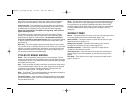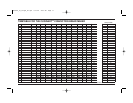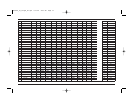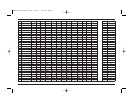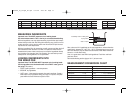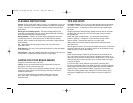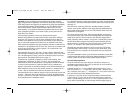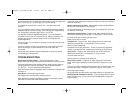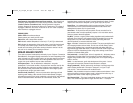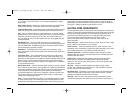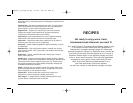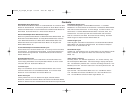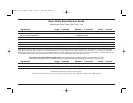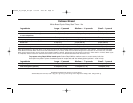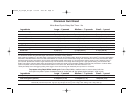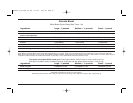
Small amount of smoke/burning smell from machine – Most often this is
caused by spilled ingredients. If it is bad, unplug machine, clean carefully
(Caution: interior of machine is hot), then plug machine in again to
continue. Program will be stored in memory for a maximum of 15 minutes if
unplugged. Otherwise “flour dust” will burn off on its own. Clean completely
when machine is unplugged and cool.
ERROR CODES
HHH or EEE with continuous beeps:
Please contact your nearby service center.
E00 or E01 (with 3 beeps when started):
E00 indicates ambient temperature is too low [-4°F (-20°C)] to bake bread.
E01 indicates the temperature of the bread maker is too high to bake bread.
This usually occurs when trying to make two successive loaves. The unit
should cool from baking cycle before starting to knead a new loaf. Let the
unit cool for 10 minutes prior to starting a new loaf.
BREAD MAKER PANTRY
To be able to prepare breads quickly and easily in your Cuisinart
™
Convection
Bread Machine, we suggest keeping some basics on hand. Depending on the
types of breads you and your family prefer, you may also want to have some
of the other items readily available. Not all the ingredients listed are in the
recipes, but can be added to improve taste and texture.
All-Purpose Flour – Can be bleached or unbleached – we prefer
unbleached. For the bread machine, all-purpose flour would be used for the
Quick Breads (also referred to as batter breads in some cookbooks). Can
also be used to make yeast breads, but bread flour with its higher protein
and gluten levels will give you better results.
Ascorbic Acid (Vitamin C) – Acts as a preservative, deterring mold and
bacteria growth. Adding a little ascorbic acid to Artisan Breads (Doughs)
will enable the yeast to work longer, producing a more flavorful, well-textured
bread. Professional bakers often add it to French breads, boules, and
baguettes when preparing the dough. A crushed (powdered) vitamin C tablet
may be used. Use about
1
⁄8 teaspoon (0.5 ml) per 3 cups (750 ml) flour.
Bread Flour – An unbleached flour high in protein and gluten. This is the
most basic flour for the bread machine and should be used rather than
unbleached all-purpose flour for yeast breads.
Cake Flour – A very soft flour with low protein. Do not use cake flour for
yeast breads unless a recipe specifically requires it. It is most often used to
make very tender cakes and pastries.
Dry Milk – (fat-free or regular) When loading ingredients add powdered milk
along with flour. Using dry milk instead of fresh milk enables you to use the
Delay feature. Dry milk is also added to breads (often along with fresh
milk/milk products) to increase nutritional value.
Eggs – Add taste, richness and colour to breads. They act as emulsifiers and
aid in keeping breads fresh and moist. Do not ever use with Delay Feature
unless using powdered egg or powdered egg white and adding with flour.
Egg washes (egg beaten with water or milk) are used with some Dough Only
recipes to brush on shaped dough after rising, before baking, to add colour
and shine to finished baked goods.
Fats (assorted) – (unsalted butter, olive oil, vegetable oil) – Add taste, texture
and moisture to breads. Most French breads do not have added fats. We
suggest using unsalted butter or a good quality olive oil for recipes calling for
butter or olive oil.
Garlic – In small amounts, garlic aids development of the yeast – but too
much garlic will cause the yeast and bread structure to collapse.
Ginger (powdered) – Boosts yeast activity and keeps it working longer. Also
aids in keeping breads fresh. Use about
1
⁄4 teaspoon (1 ml) per 3 cups
(750 ml) flour – this small amount will not affect flavour.
Lecithin – May be added to bread to maintain freshness and moisture. It also
works with gluten to produce a lighter bread. It is derived from either soy or
egg yolks and comes in either liquid or granular form.
Non-Diastatic Malt – This gives breads better structure, and can make them
softer, more tender and give them a longer shelf life. Add
1
⁄2 –1 teaspoon
17
cbk200c_ib_recipe_en.qxd 5/19/05 9:05 AM Page 18



